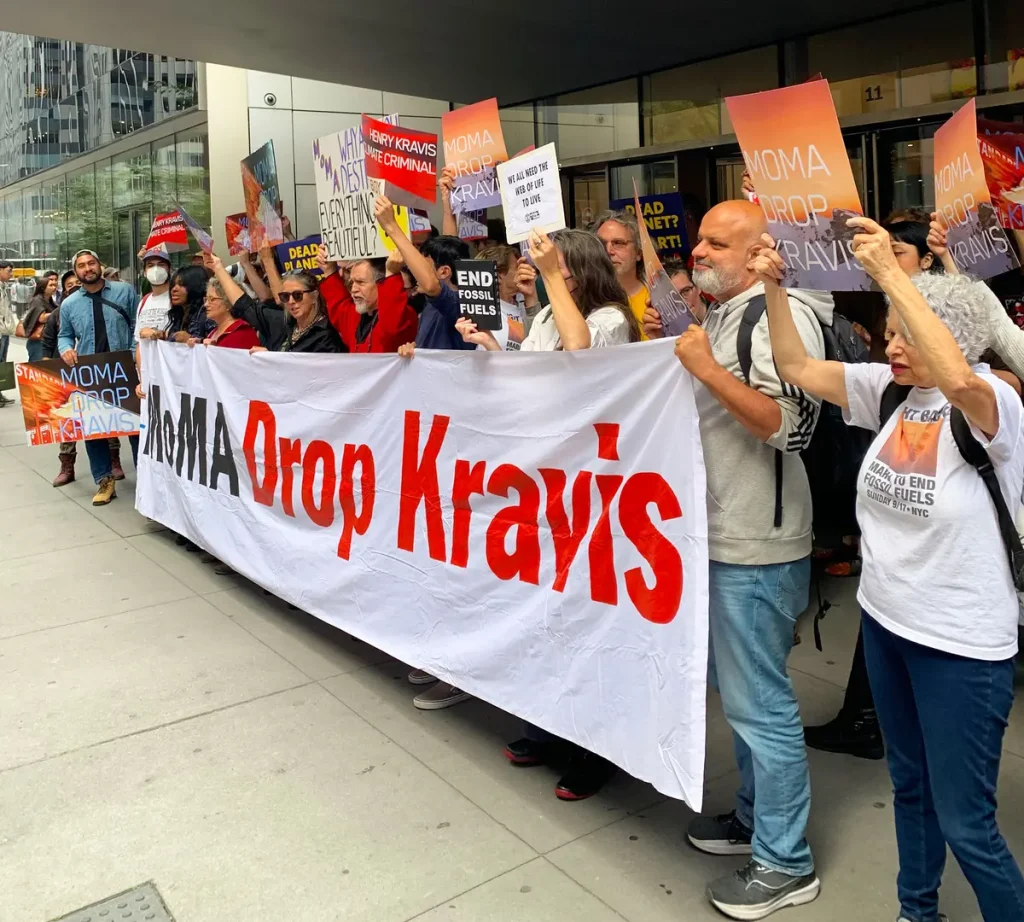Introduction
On a recent Friday, the Museum of Modern Art (MoMA) in New York City found itself at the centre of a climate activism protest, shedding light on the institution’s association with a board member whose husband’s firm invests in fossil fuel projects. Climate activists from groups like Extinction Rebellion and Climate Organising Hub converged on MoMA to demand transparency and accountability.
Demonstrations Inside and Outside MoMA
The protest saw demonstrators staging actions both inside and outside MoMA. Inside the museum, some activists held a symbolic “die-in” in front of Refik Anadol’s AI-powered artwork, “Unsupervised” (2022), in the museum’s lobby. Meanwhile, others brandished signs calling on MoMA to sever ties with Henry Kravis, whose financial contributions, along with his wife Marie-Josée, have supported various projects at the museum, including a Studio space dedicated to performance art and moving-image work.
Kravis’ Ties to Fossil Fuel Investments
Henry Kravis, a private equity magnate, has previously come under scrutiny from climate activists due to allegations that his firm, KKR, has invested in controversial projects like the Coastal Gaslink Pipeline in Canada. This pipeline project has faced opposition from members of the Wet’suwet’en First Nation, whose land is directly impacted by it.

Activists’ Artistic Protest
The protesters used visually striking signs inspired by the artwork of Ed Ruscha, whose retrospective is currently on display at MoMA. One sign, with the words “MOMA DROP KRAVIS,” was set against Ruscha’s iconic image of a Standard Oil gas station on fire. This sign served as a pointed reference to Marie-Josée Kravis, who currently chairs MoMA’s board and has been a trustee since 1994.
Calls for Accountability and Change
Laura Esther Wolfson, an Extinction Rebellion activist, emphasised the purpose of the protest, stating, “We’re disrupting business as usual because we demand MoMA be accountable. Admit the mistake they’ve made and refuse any association with KKR. Marie-Josee Kravis’s presence on the Board is a hideous stain on one of the world’s most significant cultural institutions.”
No Response from MoMA
Despite the vocal protest, MoMA has not issued a public response to the activists’ demands at the time of reporting.
KKR’s Stance on Sustainability
In contrast, a spokesperson from KKR provided a statement to Hyperallergic, expressing the firm’s commitment to investing in sustainable energy transitions while acknowledging the importance of supplying conventional energy for global well-being and economic growth.
Divergence from Previous Protests
This protest at MoMA stands out from previous climate activism demonstrations, which often involved activists attaching themselves to artworks or causing minor disruptions. While the artworks themselves were generally spared, these protests have raised concerns about potential damage to the art.
Conclusion
The climate activists’ protest at MoMA serves as a reminder of the growing intersection between cultural institutions and environmental concerns. It calls for increased transparency and accountability in the art world and highlights the responsibility that organisations like MoMA have in considering the ethical implications of their funding sources. The art community, along with the public, awaits MoMA’s response and potential actions in the wake of these calls for change.
Feature Image: Climate protesters outside the Museum of Modern Art’s main entrance on 15 September| courtesy: Benjamin Sutton/The Art Newspaper
Is Attacking Art for Climate Action ‘Vandalism’? Experts Explain

Contributor





